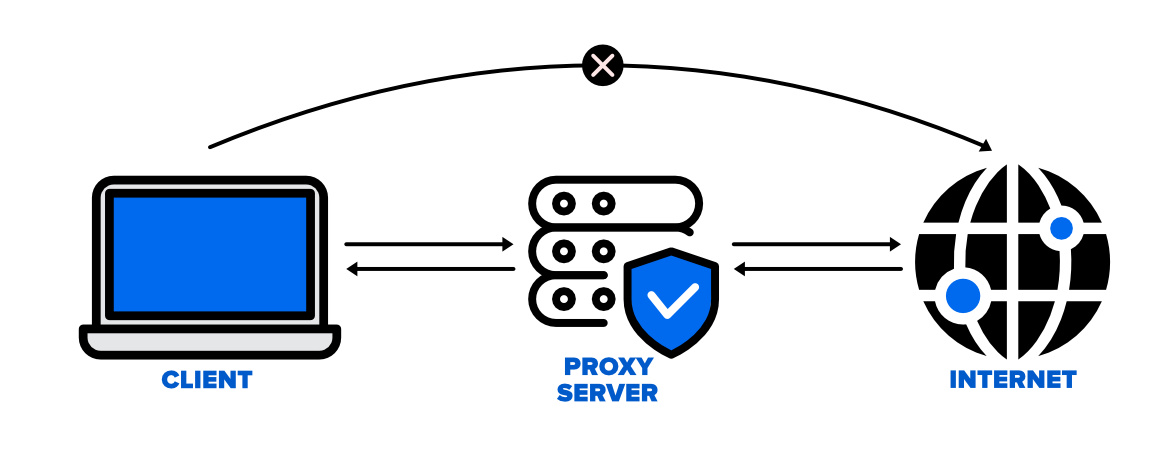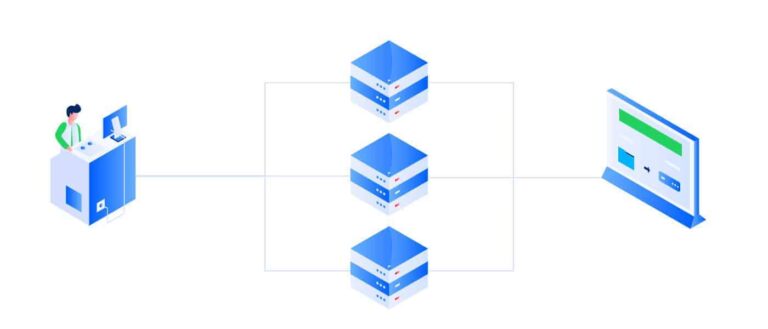
Data traverses complex pathways, hopping between nodes and navigating the intricate web of interconnected devices. This journey, from source to destination, forms the backbone of our digital interactions. Within this framework, we encounter the concept of proxies – intermediary servers that act as conduits for data transmission.
Static residential proxies represent a specialized subset of proxy servers, operating within the context of residential IP addresses. To comprehend their functionality, we must first examine the nature of IP address allocation.
Internet Service Providers (ISPs) assign IP addresses to individual households, creating a pool of residential IPs that are typically dynamic in nature, changing periodically.
Function of Static Residential Proxies
Static residential proxies, however, deviate from this norm. These are proxy servers that utilize fixed residential IP addresses, maintaining a consistent identity over extended periods. This stability in IP allocation forms the crux of their utility and sets them apart from their dynamic counterparts.
The mechanism of static residential proxies involves the routing of client requests through these fixed residential IP addresses. When a client initiates a connection, their request is first directed to the proxy server.
This server, in turn, forwards the request to the target destination using its static residential IP. The response from the destination server follows the reverse path, returning to the proxy before reaching the original client.
This intermediary role serves multiple purposes, chief among them being the obfuscation of the client’s true IP address. By presenting the static residential IP to the destination server, these proxies effectively mask the originator’s identity, providing a layer of anonymity and security.
Professional Applications Across Industries
The professional applications of static residential proxies are numerous and diverse. In the field of market research, these proxies enable businesses to conduct accurate price comparisons and competitor analysis without triggering anti-scraping measures.
The consistent residential IP addresses appear as genuine user traffic, allowing for unimpeded data collection and analysis.
For digital marketing professionals, static residential proxies offer a means to verify ad placements and monitor campaign performance across different geographic locations.
By leveraging these proxies, marketers can simulate user experiences from various residential perspectives, ensuring the accuracy and effectiveness of their targeted advertising efforts.
In the domain of cybersecurity, static residential proxies serve as valuable tools for penetration testing and vulnerability assessments. Security professionals can utilize these proxies to simulate potential attack vectors originating from residential networks, identifying weaknesses in their clients’ systems and fortifying defenses accordingly.
E-commerce entities find static residential proxies indispensable for inventory monitoring and pricing strategies.
By emulating residential user behavior, these businesses can track competitor pricing, stock levels, and promotional activities without arousing suspicion or facing IP-based restrictions.
The software development and quality assurance sectors also benefit from static residential proxies. These proxies facilitate comprehensive testing of geolocation-based features, ensuring applications function correctly across different regions.
Developers can verify content delivery, language localization, and region-specific functionalities without the need for physical presence in diverse locations.
Financial institutions and traders employ static residential proxies to access market data and execute trades with reduced latency.
By strategically positioning these proxies in key financial centers, they can obtain real-time information and execute transactions with minimal delay, gaining a competitive edge in high-frequency trading scenarios.
The stability of static residential proxies makes them particularly suited for long-term monitoring and data collection projects. Research institutions and academic organizations leverage these proxies to conduct longitudinal studies on web content, social media trends, and online behaviors, maintaining consistent access points over extended periods.
In the realm of content delivery and streaming services, static residential proxies play a crucial role in quality assurance and user experience optimization.
Content providers can simulate user access from various residential locations, ensuring smooth playback, appropriate regional content restrictions, and optimal streaming quality across different ISPs and network conditions.
Law enforcement and investigative agencies utilize static residential proxies in their digital forensics and online surveillance operations. These proxies allow for covert monitoring of suspicious activities, data collection from restricted platforms, and the tracing of digital footprints without compromising the integrity of ongoing investigations.
The telecommunications industry benefits from static residential proxies in network performance analysis and troubleshooting. By simulating residential user connections, telecom companies can identify bottlenecks, assess Quality of Service (QoS) parameters, and optimize network configurations to enhance user experiences across their service areas.
Summary
In conclusion, static residential proxies represent a sophisticated tool in the arsenal of network communication technologies. Their ability to provide consistent, residential-based IP addresses opens up a myriad of professional applications across diverse industries.
From market research and digital marketing to cybersecurity and financial trading, these proxies offer a blend of anonymity, stability, and functionality that addresses the complex needs of modern digital operations.
As the digital landscape continues to evolve, the role of static residential proxies in facilitating secure, efficient, and strategic online interactions is likely to expand, cementing their position as a critical component of professional network infrastructure.




